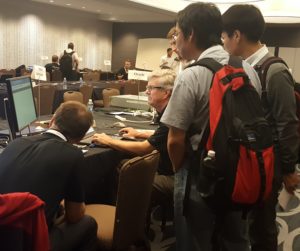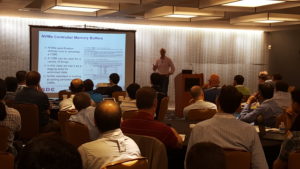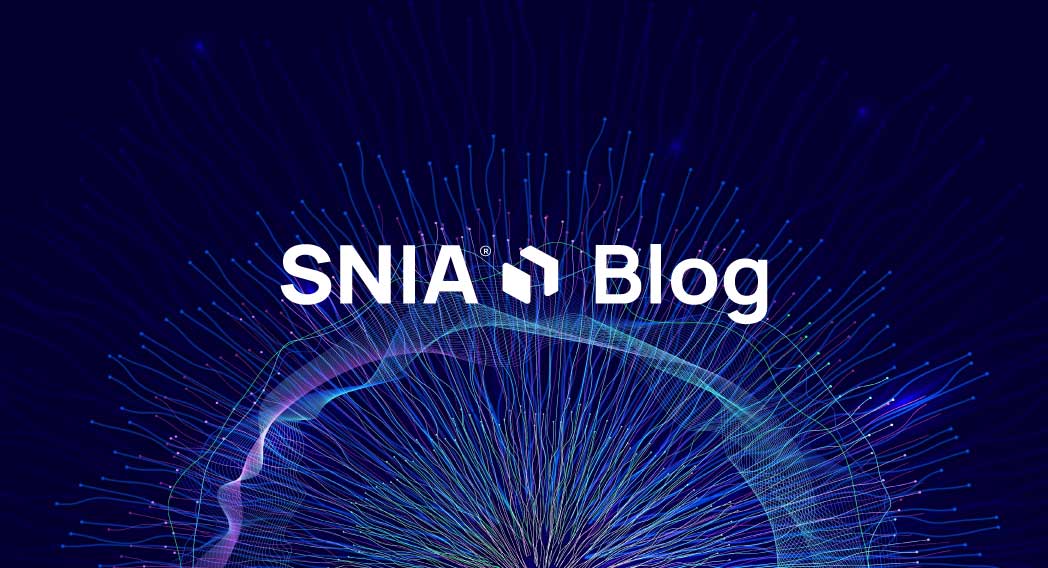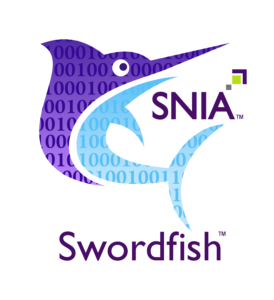 c Storage, and SMB3 plugfests; ten Birds-of-a-Feather Sessions, and amazing networking among 450+ attendees. Sessions on NVMe over Fabrics won the title of most attended, but Persistent Memory, Object Storage, and Performance were right behind. Many thanks to SDC 2016 Sponsors, who engaged attendees in exciting technology discussions.
For those not familiar with SDC, this technical industry event is designed for a variety of storage technologists at various levels from developers to architects to product managers and more. And, true to SNIA's commitment to educating the industry on current and future disruptive technologies, SDC content is now available to all - whether you attended or not - for download and viewing.
c Storage, and SMB3 plugfests; ten Birds-of-a-Feather Sessions, and amazing networking among 450+ attendees. Sessions on NVMe over Fabrics won the title of most attended, but Persistent Memory, Object Storage, and Performance were right behind. Many thanks to SDC 2016 Sponsors, who engaged attendees in exciting technology discussions.
For those not familiar with SDC, this technical industry event is designed for a variety of storage technologists at various levels from developers to architects to product managers and more. And, true to SNIA's commitment to educating the industry on current and future disruptive technologies, SDC content is now available to all - whether you attended or not - for download and viewing.
 You'll want to stream keynotes from Citigroup, Toshiba, DSSD, Los Alamos National Labs, Broadcom, Microsemi, and Intel - they're available now on demand on SNIA's YouTube channel, SNIAVideo.
All SDC presentations are now available for download; and over the next few months, you can continue to download SDC podcasts which combine audio and slides. The first podcast from SDC 2016 - on hyperscaler (as well as all 2015 SDC Podcasts) are available here, and more will be available in the coming weeks.
SNIA thanks all its members and colleagues who contributed to make SDC a success! A special thanks goes out to the SNIA Technical Council, a select group of acknowledged industry experts who work to guide SNIA technical efforts. In addition to driving the agenda and content for SDC, the Technical Council oversees and manages SNIA Technical Work Groups, reviews architectures submitted by Work Groups, and is the SNIA's technical liaison to standards organizations. Learn more about these visionary leaders at http://www.snia.org/about/organization/tech_council.
And finally, don't forget to mark your calendars now for SDC 2017 - September 11-14, 2017, again at the Hyatt Regency Santa Clara. Watch for the Call for Presentations to open in February 2017.
You'll want to stream keynotes from Citigroup, Toshiba, DSSD, Los Alamos National Labs, Broadcom, Microsemi, and Intel - they're available now on demand on SNIA's YouTube channel, SNIAVideo.
All SDC presentations are now available for download; and over the next few months, you can continue to download SDC podcasts which combine audio and slides. The first podcast from SDC 2016 - on hyperscaler (as well as all 2015 SDC Podcasts) are available here, and more will be available in the coming weeks.
SNIA thanks all its members and colleagues who contributed to make SDC a success! A special thanks goes out to the SNIA Technical Council, a select group of acknowledged industry experts who work to guide SNIA technical efforts. In addition to driving the agenda and content for SDC, the Technical Council oversees and manages SNIA Technical Work Groups, reviews architectures submitted by Work Groups, and is the SNIA's technical liaison to standards organizations. Learn more about these visionary leaders at http://www.snia.org/about/organization/tech_council.
And finally, don't forget to mark your calendars now for SDC 2017 - September 11-14, 2017, again at the Hyatt Regency Santa Clara. Watch for the Call for Presentations to open in February 2017.












 A new SNIA specification offers a unified approach to managing storage and servers in environments like hyperscale and cloud infrastructures. SNIA on Storage recently sat down with SNIA member volunteers from the Scalable Storage Management Technical Work Group (SSM TWG), who just announced the completion of Version 1.0 of the SNIA SwordfishTM storage management specification, to learn more.
SNIA on Storage (SOS): What prompted SNIA to begin work in this area?
SSM TWG: We have been looking at what IT administrators are doing in today's data centers, and what they will need to do in the future with storage equipment and storage services. We wanted to simplify the way storage is allocated, monitored, and managed, so the SNIA SSM TWG was formed and members collaborated to develop SNIA Swordfish, a specification that extends the DMTF’s (Distributed Management Task Force) Redfish™. Redfish is an open industry standard specification and schema that specifies a RESTful interface and utilizes JavaScript Object Notation and Open Data Protocol to help customers integrate solutions within their existing tool chains.
SOS: What does SNIA Swordfish do?
SSM TWG: Our SNIA Swordfish specification is based on Redfish's easy-to-use RESTful interface, and provides a scalable storage management application programming interface (API) that can handle all necessary storage management functionality, including file and block storage provisioning, volume mapping and masking, replication, and capacity and health reporting tools. SNIA Swordfish can assist in handling tasks such as locating storage with a suitable class of service and allocating it to a server or a virtual machine.
SOS: How will SNIA Swordfish fit into data center management?
SSM TWG: SNIA Swordfish was designed to support management use cases that focus on what IT administrators need to do with storage equipment and storage services in a data center. Because it extends the DMTF Redfish API into storage management, it helps provide a unified approach for managing servers, storage, and network fabrics. This unified approach will make it easier to create management software tools that can deal with operations involving multiple management domains. SNIA Swordfish is also designed to support vendor specific functionality alongside standardized functionality, to allow for future needs.
SOS: Which companies are working on SNIA Swordfish in the TWG?
SSM TWG: Our TWG members represent many of the leading companies in the storage industry today, including Broadcom, Dell EMC, HPE, Intel, Microsoft, NetApp, Nimble Storage, and VMware.
SOS: Where can IT administrators and data center managers learn more about SNIA Swordfish?
SNIA Swordfish will be a highlight of the SNIA Storage Developer conference September 19-22 in Santa Clara, CA, with overview and deep dive presentations. These presentations will be made publicly available on the SDC website at
A new SNIA specification offers a unified approach to managing storage and servers in environments like hyperscale and cloud infrastructures. SNIA on Storage recently sat down with SNIA member volunteers from the Scalable Storage Management Technical Work Group (SSM TWG), who just announced the completion of Version 1.0 of the SNIA SwordfishTM storage management specification, to learn more.
SNIA on Storage (SOS): What prompted SNIA to begin work in this area?
SSM TWG: We have been looking at what IT administrators are doing in today's data centers, and what they will need to do in the future with storage equipment and storage services. We wanted to simplify the way storage is allocated, monitored, and managed, so the SNIA SSM TWG was formed and members collaborated to develop SNIA Swordfish, a specification that extends the DMTF’s (Distributed Management Task Force) Redfish™. Redfish is an open industry standard specification and schema that specifies a RESTful interface and utilizes JavaScript Object Notation and Open Data Protocol to help customers integrate solutions within their existing tool chains.
SOS: What does SNIA Swordfish do?
SSM TWG: Our SNIA Swordfish specification is based on Redfish's easy-to-use RESTful interface, and provides a scalable storage management application programming interface (API) that can handle all necessary storage management functionality, including file and block storage provisioning, volume mapping and masking, replication, and capacity and health reporting tools. SNIA Swordfish can assist in handling tasks such as locating storage with a suitable class of service and allocating it to a server or a virtual machine.
SOS: How will SNIA Swordfish fit into data center management?
SSM TWG: SNIA Swordfish was designed to support management use cases that focus on what IT administrators need to do with storage equipment and storage services in a data center. Because it extends the DMTF Redfish API into storage management, it helps provide a unified approach for managing servers, storage, and network fabrics. This unified approach will make it easier to create management software tools that can deal with operations involving multiple management domains. SNIA Swordfish is also designed to support vendor specific functionality alongside standardized functionality, to allow for future needs.
SOS: Which companies are working on SNIA Swordfish in the TWG?
SSM TWG: Our TWG members represent many of the leading companies in the storage industry today, including Broadcom, Dell EMC, HPE, Intel, Microsoft, NetApp, Nimble Storage, and VMware.
SOS: Where can IT administrators and data center managers learn more about SNIA Swordfish?
SNIA Swordfish will be a highlight of the SNIA Storage Developer conference September 19-22 in Santa Clara, CA, with overview and deep dive presentations. These presentations will be made publicly available on the SDC website at
Leave a Reply